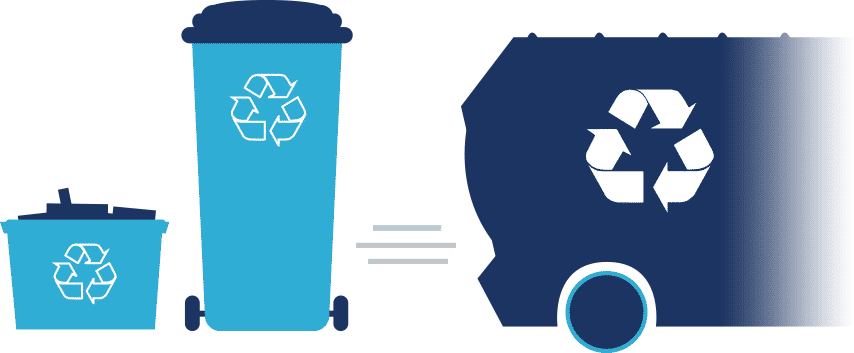Recycling is turning one material into another so that it can be used again. When you set packaging and printed paper out for collection from your curb or multi-family building, or you take these materials to a depot, you’re sending them on the first part of a long journey.
First, materials need to be collected. You have probably seen a recycling truck on your street. The truck collects as much material as it can before taking it to a transfer station or processing facility, depending on where in the province the truck operates. Transfer stations are consolidation points for materials so that as much as possible, only full loads are travelling.
Then, materials are sorted. While residents do some sorting at home, once materials are collected from households (either at the curb, from multi-family buildings, or from depots) they are taken to processing facilities for further separation. These material recovery facilities, or MRFs, include a variety of machines that sort and prepare materials for shipment to re-manufacturers.
Next, they are converted into raw materials. This is where the now sorted materials are crushed, spun, washed and/or pelletized so they are ready to be used to make new products.
Finally, recycling. The last stage is when the materials are actually recycled. Many products and packaging are made with recycled content; check the labels – you might be surprised.
For more information, see http://recyclinginbc.ca/program/happens-recycling/.


